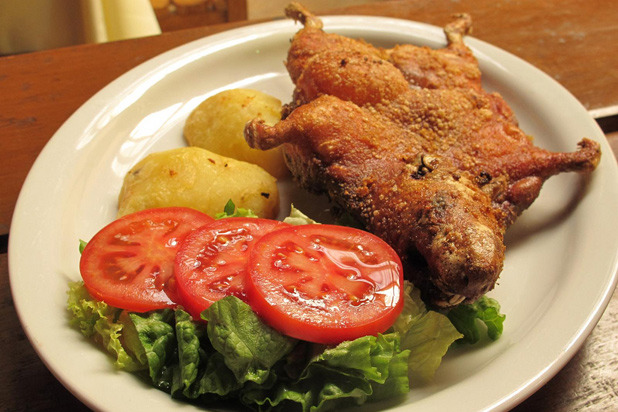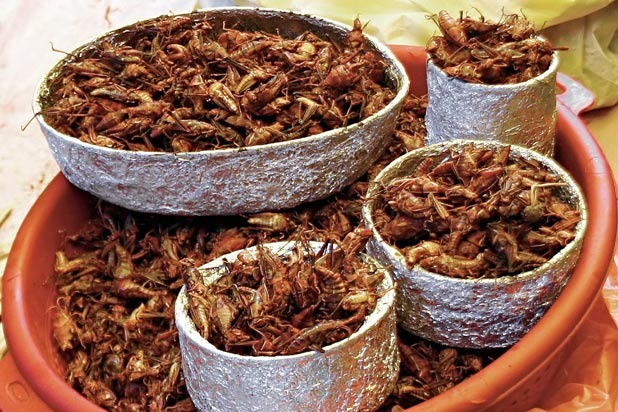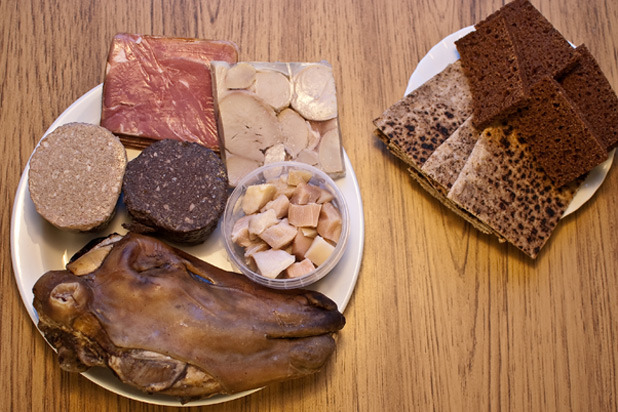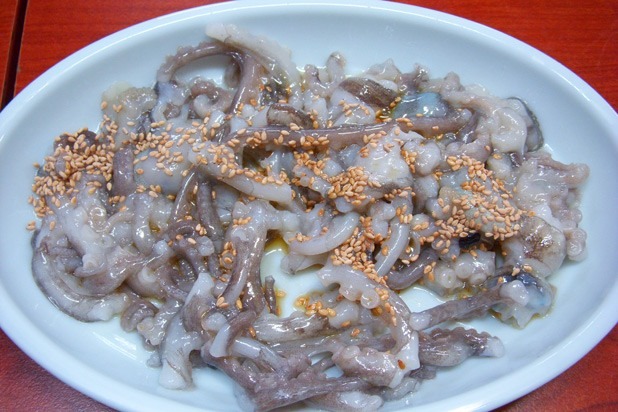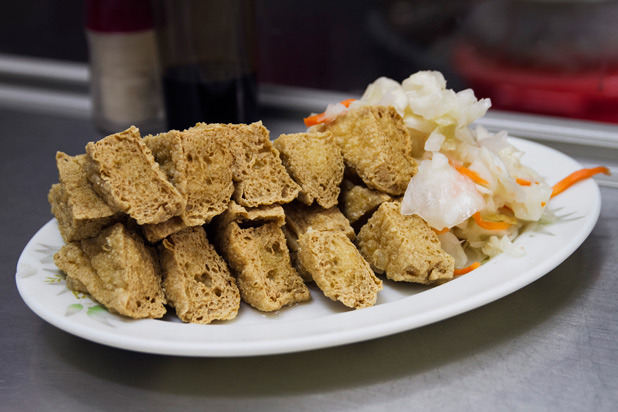Snake Heart And Other Must-Try Foods For Daring Travelers
Part of the beauty of travel lies in the adventure.
A-Ping (Fried tarantulas) — Cambodia
Plain and simple: Tarantulas are terrifying, but perhaps they are less scary when they are fried? Fried tarantula, or a-ping in Khmer, are popular in Cambodia's Kampong Cham province, specifically in the town of Skuon, 55 miles or so north of Phnom Penh. One traveler has described the legs as crunchy and the head and body as tasting like a cross between cod and chicken.
Balut — Philippines
This Philippine delicacy leaves the rest of the world aghast. Balut is an 18-day-old duck embryo that is boiled alive and then eaten in the shell. Balut is definitely not for the weak of heart. Those who are trying balut for the first time are told not to focus on the texture. Balut eaters first sip the broth surrounding the embryo out of the egg an then pee back the shell and eat the contents inside. Balut is described as a combination of a savory soup, fresh meaty bird and warm yolk.
Beondegi — South Korea
Beondegi are steamed or boiled silkworm larvae that are eaten as a snack in Korea. Sounds like the perfect movie nibble — if you fancy something that has been described as tasting like damp bark.
Cuy — Peru
Travelers who head to Peru not only want to take in the brilliant sights from their hike along the famous Machu Picchu, but many are also keen to try the country's delicacy: cuy, or guinea pig. Once you get past the idea that you're eating a guinea pig (and the bony texture of the dish), you'll find the taste is comparable to that of rabbit or, yes, chicken. National Geographic named guinea pig one of the top 10 dishes to try while traveling Peru.
Escamoles — Mexico
Escamoles, considered a delicacy by the Aztecs, are typically eaten as a snack in Mexico, though some chefs incorporate them into various dishes. What exactly are they? Ant larvae — "insect caviar" — which have a faintly nutty flavor.
Fugu — Japan
Some may call trying fugu adventurous, others may call it foolish. Fugu is the Japanese term for puffer fish, which can be a lethal dish if not prepared correctly. Fugu is full of a very strong neurotoxin called tetrodotoxin, which is one of the world's most powerful toxins,1,200 times more poisonous than cyanide. Parts of the fish, which has a delicate flavor,are tetrodotoxin-free, and these can be eaten. Typically, fugu is served sashimi style — prepared by a licensed fugu chef.
Grasshoppers — Mexico
Truth be told, you'll find grasshoppers are eaten around the world. In Mexico, these critters, which have a faintly nutty, earthy flavor, are served with lime and garlic. Head to Asia and in countries like Vietnam, you'll find them fried and served with a chile sauce.
Hákarl — Iceland
When Anthony Bourdain describes something as "the single worst, most disgusting and terrible tasting thing" he's ever eaten, you know you're up against a challenge. An Icelandic delicacy, hákarl is fermented shark from Greenland that is said to emanate an overwhelming stench of ammonia and an intensely fishy odor.
Sannakji — Korea
Sannakji definitely takes a minute to get a hold on, simply because it's still moving when you eat it. That's right — this Korean dish is octopus that is cut up and served while it's still wiggling around on your plate. Go in with a plan of attack, and make sure it doesn't suction itself to the plate, or to the side of your mouth or throat. Sannakji has a rubbery texture, but it doesn't have a strong taste — though experienced sannakji eaters often dip it in some chile paste.
Scorpion — China
In the scheme of things on our list, scorpion is often a baby step in becoming an adventurous eater. Usually fried and sold on a stick, scorpions are a delicacy in China and can be found in markets in Beijing as well as through the rest of the country. Fried scorpion has also made an appearance as a state fair snack in the U.S. Scorpion is crunchy and surprisingly quite bland in taste, though some have described it as resembling a potato chip in flavor.
Snake Heart — Vietnam
In the ancient part of Hanoi lies Le Mat Snake Village, an area aptly named for the number of snakes that can be found there. Visitors can hold snakes, drink snake blood, eat snakes, and even kill their own snakes and eat its organs. Commonly, travelers head to Snake Village to try snake heart, which is dropped into a shot glass of snake blood.
Stinky Tofu — Taiwan
Stinky tofu is so stinky that it's the only food that Andrew Zimmern couldn't swallow. Sold and loved throughout Taiwan as a snack, stinky tofu is a fermented tofu dish that has been playfully called the "blue cheese of tofu."
Rocky Mountain Oysters — USA
Don't let the name fool you; these aren't oysters. Rocky Mountain oysters are bull testicles, famous in Colorado but eaten elsewhere in the West, and in many countries around the world. They are meaty and, depending on how they're cooked (sliced, battered, and deep-fried is good) they can be firm or a little squishy in texture.
Witchetty Grubs — Australia
Sure, you can try kangaroo, and you can have a taste of crocodile while you're down under, but the real adventure lies in witchetty grubs. Witchetty grubs, a traditional Aboriginal food, are the large white larvae of several moths. When eaten raw, they are said to taste like almonds.




